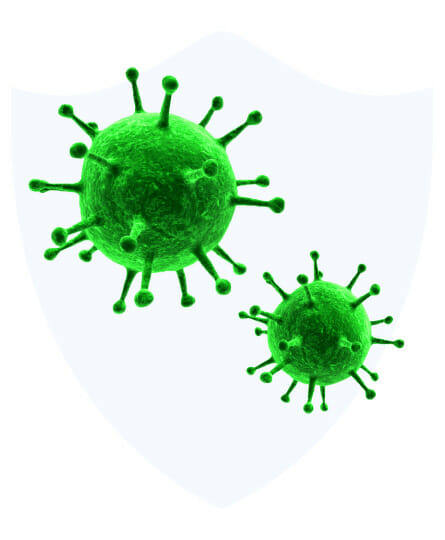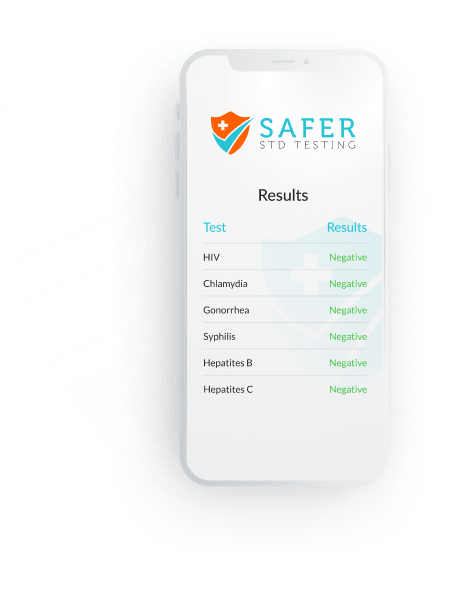


Genital herpes is transmitted through contact with the following areas of an infected person:
Viral shedding of herpes means that the virus is released through skin that appears normal. This has two important consequences. First, somebody infected with genital herpes can spread the infection during sex even if they have normal looking skin. Second, while using a latex condom will reduce the chance of getting herpes, it doesn’t totally eliminate the risk. That’s because the herpes virus can exist in areas that are not covered by a condom.
The two main ways of getting genital herpes are:
During sexual intercourse between a male and female, genital herpes is more easily transmitted from the male to the female (compared to female to male transmission). So genital herpes is more common in females than males.
The following groups are at higher-than-average risk for becoming infected with genital herpes are:
Screening means getting tested for a disease before it starts to cause symptoms or serious health problems. The Centers for Disease Control and Prevention and the US Preventive Services Task Force do not currently recommend routine screening for genital herpes in adolescents or adults, including pregnant women, who don’t have symptoms (1)(4)(5). There are several reasons why routine screening is not recommended (4):
However, health care providers may consider screening with herpes serology tests in the following groups (1):
Most people with genital herpes have no symptoms or visible sores or blisters. Or they may have mild skin findings that they believe are pimples or ingrown hairs instead of herpes.
If present, symptoms of genital herpes vary according to whether it is a primary or recurrent episode of the illness (1)(3)(6).
A primary episode of genital herpes is when you get the infection for the first time, with no prior antibodies to the HSV-1 or HSV-2. Symptoms include:
A recurrent episode (or outbreak) is when the infection reactivates in your body. The virus travels from the spinal cord back to the skin and genitals. The symptoms are usually milder and don’t last as long as the primary episode. Possible symptoms include:
Recurrent episodes occur mostly within the first few years of the primary episode, with decreasing frequency later on.
It is recommended to go to the emergency room or see a health care provider as soon as possible if you have these symptoms during an episode of genital herpes:
Genital herpes can cause several complications (1)(3)(6)(7).
Herpetic whitlow is the occurrence of painful blisters on your finger accompanied by swelling and tenderness of nearby lymph nodes. Treating with antiviral medications will speed up recovery.
Meningitis is an infection of the lining of the brain, causing fever, headache, neck stiffness, and sensitivity to light.
Encephalitis is an infection of the brain itself causing fever and acute changes in mental status.
Complications in the eye include keratitis and chorioretinitis. Both can cause blindness.
In people with a weak immune system from AIDS, the herpes viruses can also spread to the lungs (pneumonitis), liver (hepatitis), and esophagus (esophagitis).
Neonatal herpes occurs when a pregnant woman with genital herpes passes the infection to her infant in pregnancy, during childbirth, or shortly after birth. Neonatal herpes is one of the most serious complications of herpes. Babies can die from neonatal herpes.
Having genital herpes increases the risk of becoming infected with HIV, the virus that causes AIDS (1). The sores and ulcers caused by genital herpes makes it easier for the HIV virus to spread.
There are four main ways to make a diagnosis of genital herpes.
When a sexually active person has the classic herpes sores or blisters, the health care provider sometimes chooses to make the diagnosis of herpes without further testing (6). The purpose of this clinical diagnosis is to start treatment immediately in order to relieve severe symptoms. However, several other conditions can cause sores and ulcers in the genital area, such as syphilis, chancroid, granuloma inguinale, lymphogranuloma venereum, fungal infection, Behçet syndrome, and psoriasis (3).
Therefore, it is recommended to test for genital herpes with laboratory tests (1)(3)(6)(8).
The blisters are scraped to obtain fluid. The fluid is analyzed for genetic material (DNA) of the virus with a test called polymerase chain reaction (PCR).
The blisters are scraped to obtain fluid. The fluid is placed in a container of nutrients to allow it to grow and multiply. Growth of the virus confirms the diagnosis of herpes.
This test uses fluorescent antibodies to allow direct visualization of the herpes virus in fluid samples.
Serology is a blood test that looks for antibodies that your body makes in response to infection with the HSV-1 or HSV-2 virus. The recommended serology test (IgG) cannot tell whether the herpes simplex infection is currently active or has been active in the past. Because it takes time for your body to make antibodies, the test result may be negative in the early stage of the infection.
For people with herpes symptoms, a combination of tests are useful for determining if the episode is primary or recurrent. In a primary episode, there would be a positive PCR or culture but no IgG antibodies. In a recurrent episode, there would be a positive PCR or culture as well as IgG antibodies.
Before starting treatment for genital herpes, your health care provider may ask about the following:
Genital herpes cannot be definitively cured. The goals of treating with antiviral medications depend on the individual patient situation and may include the following:
For treating a person’s first known episode of genital herpes, it is recommended to start a course of oral antiviral medication within 72 hours. Treatment options for include (9):
For people who have recurrent episodes of genital herpes, it is recommended to start a course of oral antiviral medication at the earliest sign of recurrence, such as tingling or burning, even before the blisters appear. Treatment options include (9):
Daily suppressive therapy is available for people who have frequent recurrent episodes of genital herpes (e.g. 6 or more episodes per year) or who wish to lower the risk of transmitting the infection to their sexual partners. Options include (9)(10):
The American College of Obstetricians and Gynecologists recommends the following strategies to lower the risk of a pregnant woman transmitting genital herpes to her infant (5):
Topical treatment with creams or ointments is not effective for reducing symptoms of genital herpes.
The most reliable way to avoid genital herpes or other sexually transmitted infections is to avoid vaginal, anal, and oral sex.
If you are sexually, active, consider these measures to lower your risk of getting or transmitting genital herpes (1):
Taking valacyclovir 500 mg once daily lowers the risk of transmitting genital HSV-2 herpes infection to a sexual partner. This was demonstrated in a large clinical trial involving 1,484 heterosexual, monogamous couples with healthy immune systems where one partner had HSV-2 and the other partner did not (10).
There is no vaccine available to prevent getting or transmitting herpes.
Genital herpes in a pregnant woman may or may not increase the risk of miscarriage. The research is inconclusive (11).
Question: What is a cold sore?
Answer: A cold sore, or fever blister, is caused by the HSV-1 virus. Many people become infected with HSV-1 from non-sexual contact, such a kiss. The HSV-1 virus can also cause genital herpes. This happens when HSV-1 is spread from the mouth to the genitals during oral sex. But most cases of genital herpes are caused by HSV-2.




